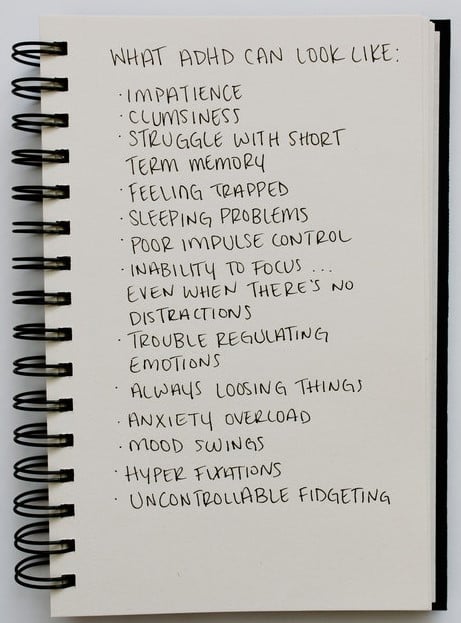Table of Contents
Behavioral therapy can help people who struggle with attention deficit hyperactivity disorder (ADHD) to manage and change unwanted or harmful behaviors. New positive behaviors can be developed with this therapy and thus, it is often included in an ADHD treatment plan.
What is ADHD?
ADHD is a neurodevelopmental disorder which is characterized by difficulty in concentrating, paying attention, impulse control, hyperactivity, and organization. ADHD is a condition that can affect both children and adults.
There are generally three types of ADHD:
- ADHD predominantly inattentive presentation- where people have difficulties staying focused on tasks, organized and paying attention.
- ADHD hyperactive impulsive presentation- where people struggle to stay in one place, sit still or follow instructions. People with this type of ADHD may act on impulse and talk excessively.
- ADHD combined presentation- where people have symptoms of both the above mentioned types.

ADHD symptoms
ADHD predominantly inattentive presentation symptoms include:
- Easily distracted
- Have trouble paying attention, especially during class or meetings
- Have trouble listening during a conversation
- Avoiding tasks that need focus and attention
- Often losing things
- Often making careless mistakes
- Have difficulty following instructions
- Find it hard to remember important dates and appointments
ADHD predominantly hyperactive impulsive symptoms include:
- Talking excessively and often interrupting others
- Have difficulty with performing quiet activities
- Have difficulty with sitting still
- Have difficulty staying seated
- Have difficulty standing in lines
What is behavior therapy for ADHD?
Behavioral therapy can help those who have ADHD manage their symptoms and learn skills that will help them in their daily lives. This is because its main goal is to replace negative or unwanted behaviors with positive or preferred ones.
While behavioral therapy does not actually cure ADHD, it is an effective therapy that affects change in problem areas such as focus, impulse control and organization. Skills learnt in behavioral therapy can make it much easier to succeed in school, at home, work as well as in relationships.
Behavioral therapy is often used with medication but is sometimes effective enough to help people manage ADHD symptoms without having to use drugs. For children with ADHD, parents or guardians need to be involved in the therapy process to set goals, learn techniques and implement them daily at home and in school.
Behavior therapy for ADHD child
Children with ADHD are frequently impulsive, fidgety and have difficulty sitting still. They find it hard to pay attention and this can result in disruptive behaviors at home and in school.
Behavioral therapy for children with ADHD aims to:
- Reduce disruptive behaviors
- Increase and strengthen good or preferred behaviors
- Teach the child how to express their feelings in appropriate ways
This is accomplished by:
- Setting clear goals for the child. Goals should be specific, reasonable and achievable. Instructions should be clear and the child is made sure to understand the actions that they must take. For example, completing homework by a certain time after school.
- Being consistent with rewards and consequences. Choose rewards that will motivate the child and be sure that the child is aware of the consequences for the unwanted behavior. Follow through with both rewards and consequences to reinforce positive behaviors and reduce negative behaviors.
Behavioral therapy techniques that are often used to help ADHD children develop new behaviors include:
- Positive reinforcement, where the child is rewarded for a wanted behavior. For example, extra 10 minutes of screen time if homework is completed on time.
- Token economy, where rewards and consequences are used. Rewards are given for good behavior while consequences for unwanted behaviors are implemented. For example, teachers giving out stickers for completed homework. The consequences of incomplete homework would be no sticker reward. Once the child reaches a certain amount of tokens (in this case, stickers), he or she will be able to exchange it for a toy or something that the child likes.
- Time out, where the child is removed from the rewarding situation or environment. For example, a child who is hitting another child is removed from the situation and made to sit quietly alone for a few minutes.
- Response cost where the unwanted behavior results in a loss of reward or privileges. For example, incomplete homework means loss of screen time.
What to expect during behavioral therapy for an ADHD child?
Before coming up with a treatment plan, you will have to talk to the therapist about your child’s challenging behaviors and discuss goals that you want to reach.
Treatment plan will most likely include a clear reward and consequence system. The therapist will help explain the system to your child and help him or her choose rewards that will motivate them to do their best. Charts listing the action your child needs to take are a good reminder as it shows exactly what needs to be done daily.
It’s likely that you and your child will have to meet with the therapist once a week to discuss how things are going as well as to work out any problems or challenges. The therapist will also help your child learn skills to help them complete the tasks listed on the chart.
They will also learn strategies and ways to manage anger, inattention and impulsivity, making it easier for them to reach their goals.
Tips for parents
It can be frustrating to help children with ADHD control their behavior. Here are some tips for parents and guardians:
- Have a daily routine – Try to have your child go to bed, wake up, eat, go to school and play outside the same time every day.
- Reduce distractions – Overstimulation can be hard for your child to deal with, so cut down on computer games, and tv. If possible, avoid busy places.
- Stay organized – Have specific places to keep items so that your child is less likely to lose them.
- Reward positive behavior – Praise and reward your child for paying attention, good behavior and reaching goals.
- Set reachable goals – Encourage your child to take steps to control his or her behavior. Small reachable goals will help your child to progress slowly.
- Stay ‘on task’ – Use checklists and charts to track progress with homework. Offer brief instructions and frequent reminders.
- Limit choices – Giving your child only 2 or 3 options at a time is less overwhelming and will help him to make good decisions.
- Discipline calmly – Time outs, and discussion of negative behavior can be more effective than physical punishment.
- Develop a support system – Communicate with teachers and caregivers so that you can coordinate your efforts to help your child.

Behavioral therapy for ADHD adults
Adults with ADHD often struggle with disorganization, time management, emotion regulation and lack of motivation. This often results in negative thoughts and emotions, stress and low self esteem.
They may blame themselves for their struggles and believe that they will never succeed. Thus, behavioral therapy for adults is quite different from behavioral therapy for children.
For adults, cognitive behavioral therapy (CBT) is often used to help with the negative thought processes. CBT addresses the thought processes that lead to the negative behaviors. Thus, reframing these thoughts will result in new, positive behaviors.
CBT can help adults with ADHD to:
- Manage negative emotions
- Cope with stress and deal with obligations
- Reset negative expectations
- Figure out negative behavioral patterns
- Navigate through everyday life
- Organize and make time for self care
- Challenge self defeating thoughts and behaviors.
CBT will also be able to address other issues that adults with ADHD may struggle with, such as addiction and depression. For example, ADHD adults who turn to substance use to cope with their symptoms are taught better ways to manage ADHD symptoms.
Besides CBT, dialectical behavioral therapy (DBT) can also help ADHD adults. In addition to dealing with thoughts and behavior, DBT teaches its patients to understand, accept and manage difficult feelings and emotions to make positive behavioral changes.
How effective is behavioral therapy for ADHD?
According to the Centers for Disease Control and Prevention, behavioral therapy, alongside parent training, can help ADHD children develop positive behaviors. However, the therapy process may require parents, caregivers, teachers and therapists to work together to establish behavioral modification rules.
Besides this, CBT has been found to be effective for ADHD adolescents who did not respond well to medication. A 2018 study also demonstrated that college students who were struggling with ADHD had improved executive functions and were better able to manage their time, complete tasks and regulate emotions and behavior.
As for adults, a 2016 review reported that CBT is able to reduce ADHD symptoms in adults. CBT is also able to address conditions such as depression and anxiety, both of which are commonly experienced by ADHD adults.
Conclusion
Behavioral therapy can help both children and adults who are struggling with ADHD symptoms. Check with your mental health practitioner if you’re looking for a behavior therapist.
For therapists looking for a safe, conducive space, A Space Between offers numerous therapy rooms.
The article is a part of our comprehensive series on “Behavioural therapy”
No matter what you’re facing, perhaps our website can offer up some solace or comfort. Know that you’re not alone, and that there is help available. This can be hard to keep in mind if you haven’t quite found the right support system. While it’s definitely not easy to find the right fit—whether you’re looking for a support group or a mental health provider—with diligence, it’s totally possible.
If you are a therapist, life coach or counsellor looking to join our growing community, head over to book a tour once you have learnt about the plans we offer. At A Space Between, there is a ready league of providers you can network with. With professionals from various backgrounds and therapy practices, there are bound to be the ones you can connect with. Private practice does not have to be lonely.


